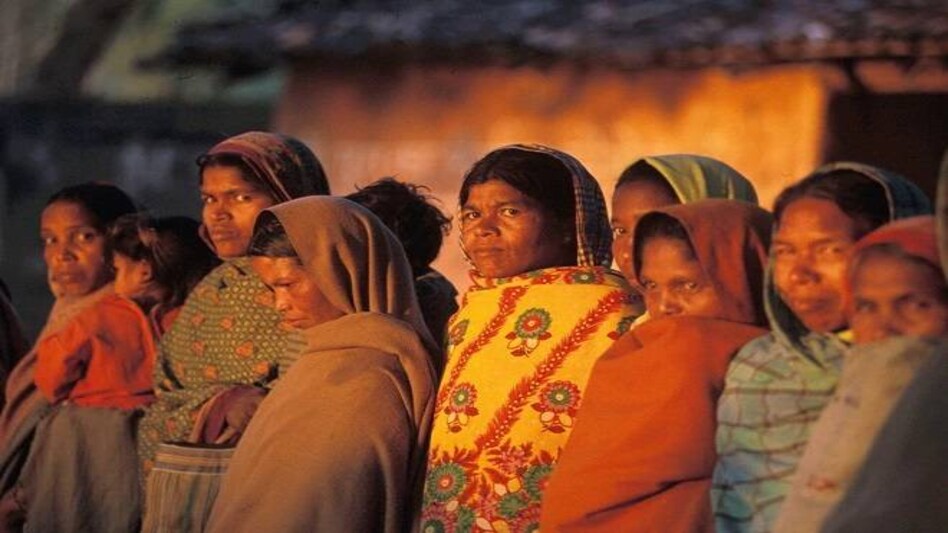 Male heads of household were 11.3 percentage points more likely to be employed in post-lockdown phase, compared to female heads of household
Male heads of household were 11.3 percentage points more likely to be employed in post-lockdown phase, compared to female heads of household  Male heads of household were 11.3 percentage points more likely to be employed in post-lockdown phase, compared to female heads of household
Male heads of household were 11.3 percentage points more likely to be employed in post-lockdown phase, compared to female heads of household Though coronavirus lockdown has impacted lakhs of Indians, a study shows that women are the worst hit when it comes to job prospects. The research paper published by Ashwini Deshpande, professor of economics at Ashoka University, claims that women who were employed before the lockdown were 23.5 percentage points less likely to be employed compared to men in the post-lockdown phase.
While the drop in male employment is greater in absolute terms, it is due to record low female workforce participation rates.
"Due to the pre-existing significant and widening gender gaps in labour force participation rates and employment, the absolute number of men who lost employment is larger than the absolute number of women who lost employment in the first month of the lockdown," the paper highlighted.
Male heads of household were 11.3 percentage points more likely to be employed in post-lockdown phase, compared to female heads of household who were employed in the pre-lockdown phase, noted the paper which is based on analysis of CMIE data.
"While women and dalits have suffered disproportionately more job losses, risky, hazardous and stigmatised jobs are exclusively their preserve. All frontline health workers (ASHA or Accredited Social Health Activists) are women; manual scavengers are exclusively Dalit. Thus, for several women and Dalits, the choice seems to be between unemployment and jobs that put them at risk of disease and infection and make them targets of vicious stigma," it said.
Also Read: India coronavirus cases: Top 10 states with maximum COVID-19 cases; Maharashtra worst hit
Based on the Centre for Monitoring Indian Economy (CMIE)'s Consumer Pyramids Household Survey (CPHS) database, the paper titled 'The Covid-19 Lockdown in India: Gender and Caste dimensions of the first job losses' examined the employment status of 37,000 individuals. The paper estimated the early differential effects of the lockdown by estimating the probability of being employed in April 2020, the first month of the extremely stringent national lockdown.
Examining the employment status of 37,000 individuals, the study finds that individuals were 12.8 percentage points less likely to be employed in April 2020, compared to the pre-lockdown period. "On a pre-lockdown base of 38.9, this translates into a 33 per cent reduction in the likelihood of being employed. However, individuals who were employed in the pre-lockdown period were 53 percent more likely to be employed in the post-lockdown period compared to those who were not employed earlier," the paper noted.
Also Read: India's unemployment rate dropped to 5.8% in June 2019; jobless among SCs, STs, minorities rise
Meanwhile, a recent report by CMIE revealed that in May 2020, with a gradual re-opening of the economy, 2.1 crore jobs got added to the low base of April 2020. This is a hopeful sign. However, despite this the April unemployment rate remained at a high rate of 23.5 per cent, which indicates that the unemployment challenge is massive.
Additionally, India's growth rate has been faltering over the last six years, decelerating each year since 2016, to reach 3.1 percent in the first quarter of 2020 (January to March), just before the COVID-19 pandemic hit India. The lockdown is likely to push the economy into a deep recession with the very real possibility of massive job losses.
Following a one-day "janata curfew" (people's curfew) on March 22, 2020, India imposed a strict nationwide lockdown on March 25, 2020, which shut down virtually all economic activity barring essential services. The lockdown is being relaxed in phases; however, economic activity remained nearly fully shutdown throughout the month of April.
Copyright©2025 Living Media India Limited. For reprint rights: Syndications Today